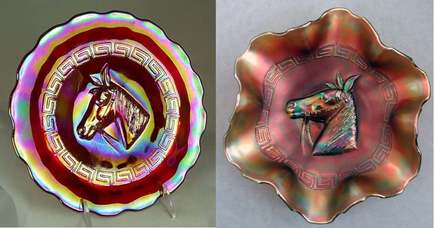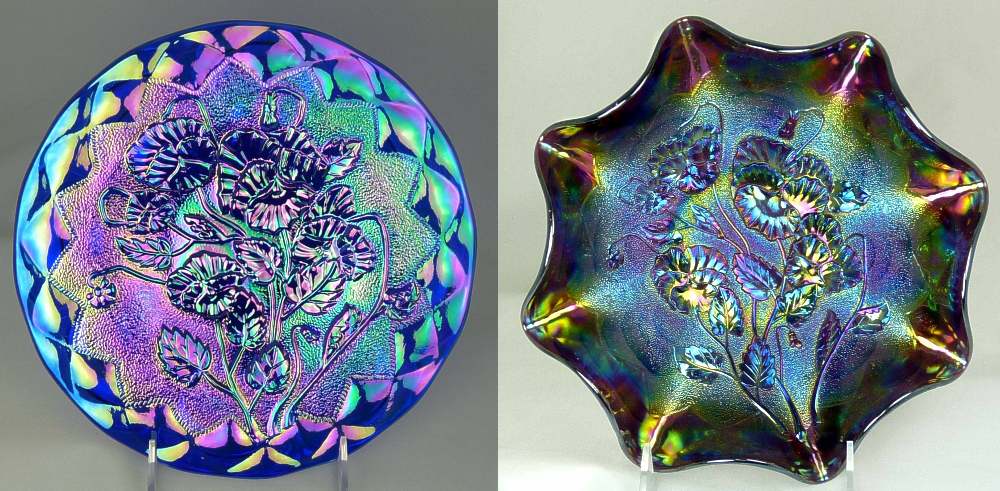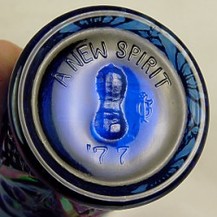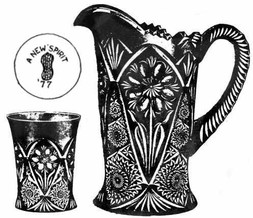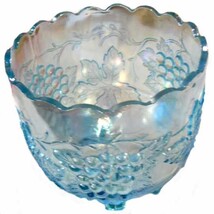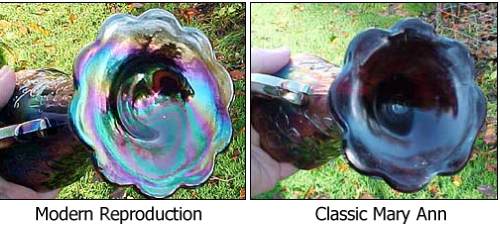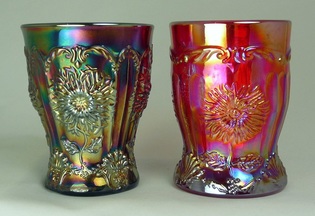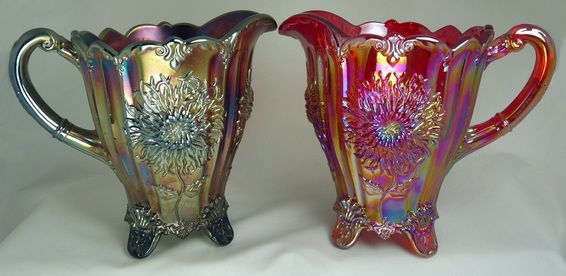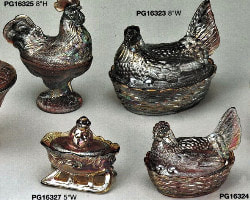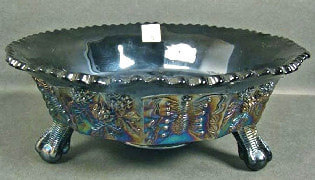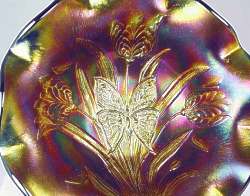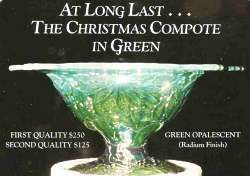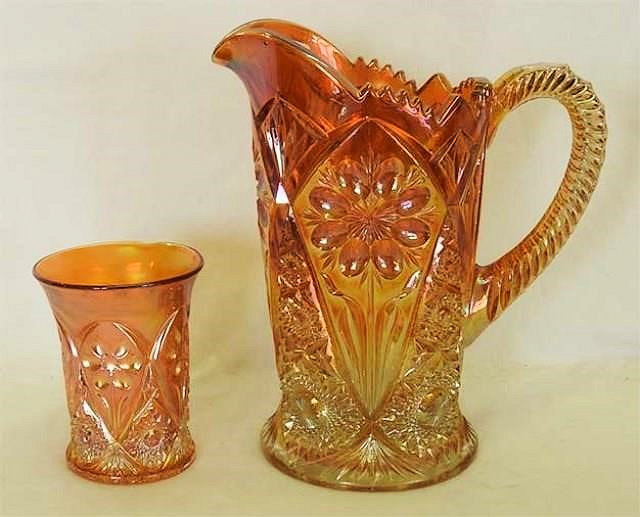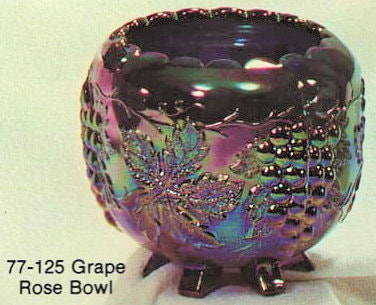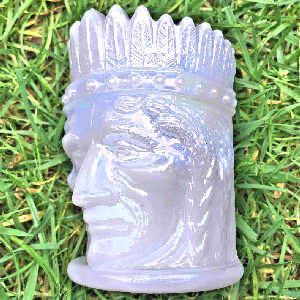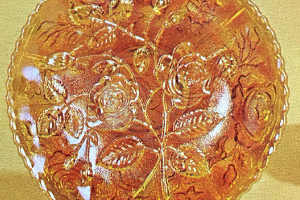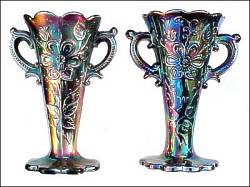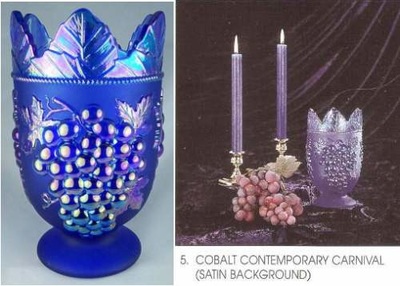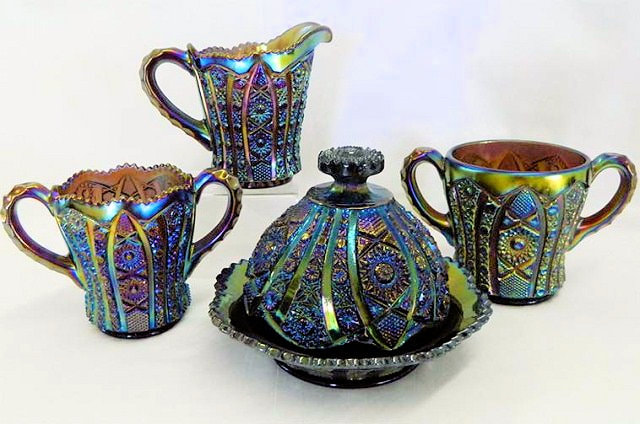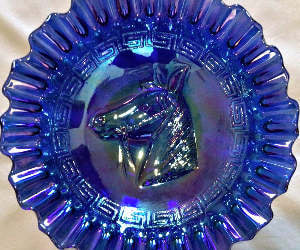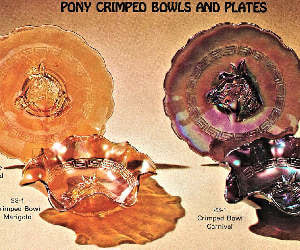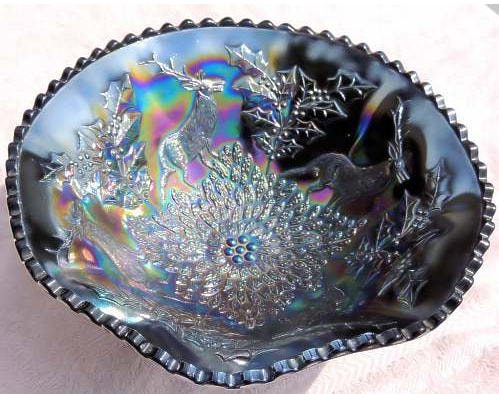Contemporary Reissues and Reproductions.
Copyright G & S Thistlewood
Let us first dispel a couple of myths.
One website says that “reproduction Carnival is shinier, while older Carnival has a satin, almost velvet iridescent finish” This is very misleading - it suggests an easy-fix solution that belies the complexity of the truth. Millersburg’s Radium Carnival, for example, is very shiny indeed, as are many Imperial examples.
Another website advised that “comparing the piece's pattern to original Carnival Glass patterns available in company catalogues can be helpful.” That seems like wishful thinking, as it is not always practical or possible.
Reissues and reproductions are contemporary pressings using original or re-made/re-engineered moulds. They were not usually made to mislead an unwary collector, but once in the secondary market they have the potential to cause problems if not correctly identified.
Reissues - used to describe new/contemporary pieces made by the original maker. They could be from the old mould (which may have been re-engineered or re-cut if they were worn or not working properly), or an entirely new mould based on the original pattern. For example, Fenton in the USA made a wide range of items in their old, original patterns, which mostly are marked with their trademark logo - read "Fenton Old and New".
Reproductions - new/contemporary items that are made from old or re-made/re-engineered moulds by a different factory to the original maker. For example the pieces made by Summit using old Westmoreland moulds. Re-made or re-engineered moulds may be in different shapes to the original old ones, or have some pattern differences. Sometimes they will carry the new maker's mark (or signature) but not always. In some cases, contemporary Carnival was (and is) being made without removing the old, original maker's mark.
Always check for makers' marks
|
Classic Pony pieces were only made in marigold, amethyst, aqua and ice green, and Classic original plates are rare. The red plate on the left shouts reproduction - it was made (in many colours) by Mosser. New collectors may not be aware of all these factors and so the trade-marking is vital here: the reproduction has an etched Levay limited edition mark "8/100 Levay '04". There’s another complication: in the 1970s, L.G. Wright also had reproduction Pony bowls and plates made by Westmoreland, in amethyst and marigold. They are not marked, but can be somewhat gaudily iridised.
|
Pansy is an easily recognised pattern. The Classic original made by Imperial is on the right. Imperial/Lennox made some trademarked re-issues of the Pansy bowl in the 1980s. L G Wright also had reproduction Pansy items made for them in Carnival - some of them have the so-called "wonky N" mark. The plate above on the left is also a Pansy item, but it is from an entirely new mould, with many pattern differences. Made by Fenton, it is marked with Fenton’s cursive F in an oval. "HOACGA 2000" is moulded on the base (it was a Heart of America Carnival Glass Club souvenir).
|
|
On the far right is an ad for the reissued Four Seventy Four water pitcher and tumbler that were made by Imperial in 1977 for Joan Westerfield in “ultra blue”. Each is trademarked IG and clearly identified by an unusual peanut logo on the base. In fact these pieces are probably the only items of Carnival to have the image of a peanut on them! The logo was to reflect the politics of the era: Jimmy Carter and his “A New Spirit”. The presence (or lack of) a trademark is one of the first things to check out on a piece. Many repros are marked: Fenton, new Northwood, Imperial, Westmoreland and some Rosso and Mosser pieces may carry moulded trademarks—providing immediate attribution. |
|
Marks are not always infallible!
This Grape Delight reproduction nut bowl (right) acquired a kind of notoriety when they began to appear in ice blue and in amber, in the mid -70s with what at first sight looked like a genuine Northwood N mark However, closer inspection revealed that although it is a neat looking N and it is correctly underlined, the circle around it is not complete. According to Dorothy Taylor in her “Encore by Dorothy Book 1”, they were made for John Jennings of Tennessee by Mosser. Ironically, the N mark suggested a belief that the original Grape Delight was a Northwood item, but in fact it was made in Classic Carnival by Dugan-Diamond! Also reported at the time were Grape and Cable butters in the same ice blue and in amber. Later, in the early 1980s, Mosser made the Grape Delight items (rose bowl and nut bowl shapes) in purple and ice green for L.G. Wright. Cobalt blue was also made in the reproductions. They are often wrongly identified as Classic Carnival Glass when found in the secondary market. |
There’s a lot of misleading information about these reproductions on the internet. One source claims that the flared rim on the nut bowls is only found on the originals, but if you look at the L G Wright illustrations above, you’ll see that’s not the case – the reproductions were also made with flared rims.
There’s a lot of misleading information about these reproductions on the internet. One source claims that the flared rim on the nut bowls is only found on the originals, but if you look at the L G Wright illustrations above, you’ll see that’s not the case – the reproductions were also made with flared rims.
Look at the Base
|
Once you’ve checked for a trademark (and not found one) the next great clue to whether a piece is a repro or not, is the base. Most (not all) Classic Carnival does not have iridescence on the base, but many newer items do—and this includes many of the reproductions. If the item you are unsure about is a Classic USA made piece, such as the Mary Ann vase (left), look for evidence on the base of the piece.
The Mary Ann vase was reproduced in the 1990s by Mosser (who called it the Mary Dugan vase). There are various differences between the Dugan original and the Mosser reproduction, so they are actually not too hard to tell apart. But crucially there is no trademark, so it could be a bit difficult for a less experienced collector to spot the difference at first sight. However, once you look at the base of the two vases all doubt is erased. Read the full Mary Ann - Mary Dugan story. |
Above is a picture of the underside of the base of the vases: the reproduction glistens with iridescence while the original Dugan one is not iridised. As evidence, of a reproduction, it is compelling. No need to look further.
Know your Classic Carnival colours and shapes
Check out the Dahlia tumblers and pitchers above (the reproductions are the red ones, made by Mosser). Immediately you can see that the reproduction tumbler has a different shape and different pattern details from the original Dugan one. There are four dahlia flowers on the old Dugan original and only three on the contemporary Mosser one, which also serves to immediately distinguish between old and new.
But while the new tumbler is very different from the old version, the new and old pitchers are very similar. The best way to distinguish between new and old pitchers is to look at their bases for iridescence. The colours that they are produced in can also help: the red here is rather obvious, and Mosser made a gorgeous Hunter Green Carnival version. Dugan did not make the originals in either red or green!
But Mosser do make a purple Dahlia too—and it boasts a stunning iridescence.
Look for small things
Sometimes the evidence is tiny and needs to be searched for—a good example is the single scalloped line on the top edge of the Fieldflower tumbler reproductions. The Classic old tumblers made by Imperial have a double scalloped line that matches the double scallop below it whereas on the new tumblers, the top line is a single scallop. Imperial reproduced their Fieldflower pattern, but these were marked with successive Imperial/Lennox logos—Summit subsequently also made the tumbler and indeed some examples are also marked with the Rosso (wholesaler) logo.
But some reproductions are unmarked and it’s worth knowing what to look for as it can save you a lot of money!
Read more about reissues and reproductions - click on any image below
